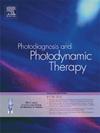评估用于糖尿病视网膜病变筛查的人工智能增强型非水动力眼底摄影。
IF 3.1
3区 医学
Q2 ONCOLOGY
引用次数: 0
摘要
目的评估将非眼球屈光眼底摄影与人工智能(AI)阅片平台结合用于糖尿病视网膜病变(DR)大规模筛查的可行性:在这项研究中,我们选择了2019年12月至2021年4月在我院住院的120名糖尿病患者。使用非眼球屈光眼底照相术获得了 240 只眼睛的视网膜成像。根据不同的判读方法,这些患者的眼底图像被分为两组。实验组 1 使用人工智能阅读平台对图像进行分析和分级,以诊断 DR。在实验组 2 中,由眼底疾病专业的眼科副主任医师对图像进行分析和分级,以诊断 DR。与此同时,所有患者都接受了 DR 诊断和分级的金标准--眼底荧光素血管造影术(FFA)--结果作为对照组。通过比较实验组 1 和 2 与对照组的结果,评估两种方法的诊断价值:结果:以对照组(FFA 结果)为金标准,两个实验组在诊断灵敏度、特异性、假阳性率、假阴性率、阳性预测值、阴性预测值、尤登指数、Kappa 值和诊断准确性方面均无显著差异(X2 = 0.371,P > 0.05):与人工读片组相比,人工智能读片组在所有诊断指标上均无显着差异,表现出较高的灵敏度和特异性,以及相对较高的阳性预测值。此外,它还显示出与金标准诊断的高度一致性。该技术有望适用于大规模 DR 筛查。本文章由计算机程序翻译,如有差异,请以英文原文为准。
Evaluation of AI-enhanced non-mydriatic fundus photography for diabetic retinopathy screening
Objective
To assess the feasibility of using non-mydriatic fundus photography in conjunction with an artificial intelligence (AI) reading platform for large-scale screening of diabetic retinopathy (DR).
Methods
In this study, we selected 120 patients with diabetes hospitalized in our institution from December 2019 to April 2021. Retinal imaging of 240 eyes was obtained using non-mydriatic fundus photography. The fundus images of these patients were divided into two groups based on different interpretation methods. In Experiment Group 1, the images were analyzed and graded for DR diagnosis using an AI reading platform. In Experiment Group 2, the images were analyzed and graded for DR diagnosis by an associate chief physician in ophthalmology, specializing in fundus diseases. Concurrently, all patients underwent the gold standard for DR diagnosis and grading—fundus fluorescein angiography (FFA)—with the outcomes serving as the Control Group. The diagnostic value of the two methods was assessed by comparing the results of Experiment Groups 1 and 2 with those of the Control Group.
Results
Keeping the control group (FFA results) as the gold standard, no significant differences were observed between the two experimental groups regarding diagnostic sensitivity, specificity, false positive rate, false negative rate, positive predictive value, negative predictive value, Youden's index, Kappa value, and diagnostic accuracy (X2 = 0.371, P > 0.05).
Conclusion
Compared with the manual reading group, the AI reading group revealed no significant differences across all diagnostic indicators, exhibiting high sensitivity and specificity, as well as a relatively high positive predictive value. Additionally, it demonstrated a high level of diagnostic consistency with the gold standard. This technology holds potential for suitability in large-scale screening of DR.
求助全文
通过发布文献求助,成功后即可免费获取论文全文。
去求助
来源期刊

Photodiagnosis and Photodynamic Therapy
ONCOLOGY-
CiteScore
5.80
自引率
24.20%
发文量
509
审稿时长
50 days
期刊介绍:
Photodiagnosis and Photodynamic Therapy is an international journal for the dissemination of scientific knowledge and clinical developments of Photodiagnosis and Photodynamic Therapy in all medical specialties. The journal publishes original articles, review articles, case presentations, "how-to-do-it" articles, Letters to the Editor, short communications and relevant images with short descriptions. All submitted material is subject to a strict peer-review process.
 求助内容:
求助内容: 应助结果提醒方式:
应助结果提醒方式:


